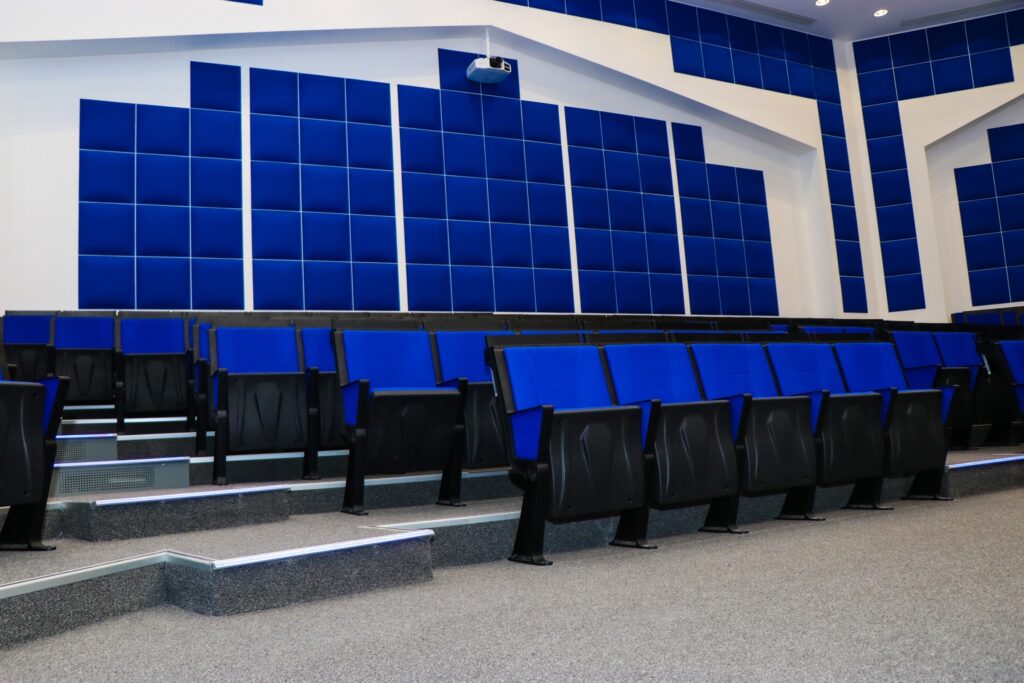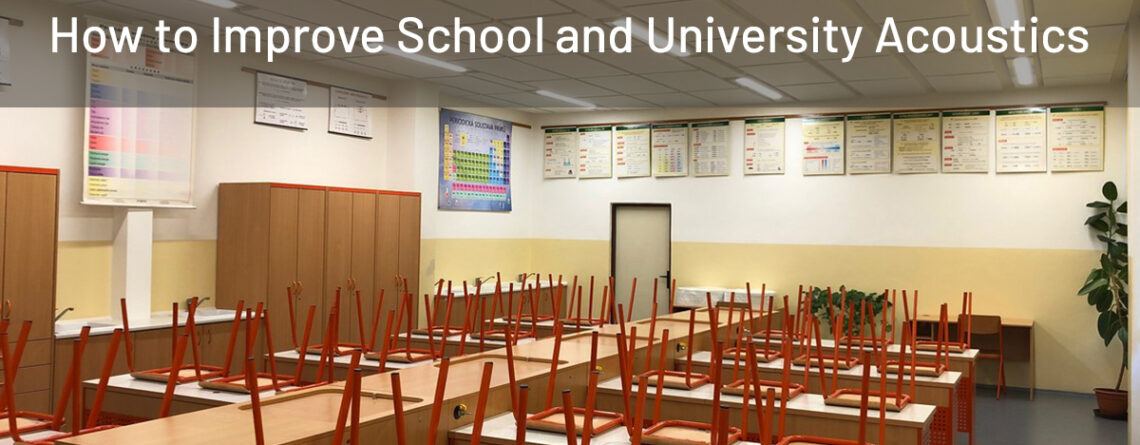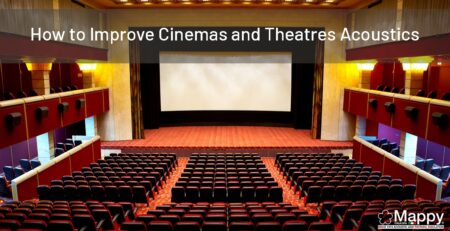How to Improve School and University Acoustics
The acoustic characteristics of school environments are among the main factors that affect the quality of students’ learning.
Scientific studies show that, as the acoustic quality of classes increases, there is a significant improvement in students’ level of learning.
Not only the teaching skills of teachers are functional for effective learning, but also the presence of acoustically suitable spaces optimized for the correct propagation of sound waves is essential to ensure the best learning environment.
The main aim is to limit the phenomenon of reverberation as much as possible. In fact, this factor makes it more difficult to understand sounds, causing important repercussions at a psychophysical level, because it decreases the students’ ability to pay attention and increases the mental fatigue of both learners and professors, also causing forms of physiological malaise and general fatigue.

How to limit reverberation time in schools and universities
The main acoustic problem that characterizes school buildings and university environments is the excessive reverberation time, which causes the so-called “rumble”. This phenomenon generates the inconveniences and the negative repercussions mentioned above inside the classrooms, and in general in the wide spaces that characterize this kind of structures.
In fact, the majority of school environments consists of smooth and compact walls and ceilings, devoid of any element able to prevent the sound waves to refract and continue in their propagation.
The interventions performed in these environments are usually carried out on structures already realized and completed, which is the reason why the solution typically adopted in this casa is the insertion of surfaces and sound-absorbing elements. These materials have specific characteristics that make them able to “imprison” the acoustic force of propagation of sound waves, thus limiting the reverberation in the environments where they are inserted.
The sound absorbing panel more suitable in this case must have not only quality standards and high performance that allow to limit the reverberation time by containing the overall noise, but it is also important that they comply with the main national and international certifications in terms of safety, non-toxicity, lightness, durability and non-flammability, such as Class 1 certification and Euroclass B-s1-d0, in compliance with the many regulations in force in the sector.
Finally, looks also count, and in an environment like a school or a university, an attractive design would definitely be a stimulus for creativity.
The law regulating reverberation in schools and universities
Most countries have rules and regulations governing the characteristics and noise limits to be respected according to the type of building and, above all, according to the main purpose.
In Italy, for example, the UNI 11532-1:2018 regulates and defines the acoustic properties that a structure must have according to its intended use, the design methods to be followed and the measurement techniques to be used to assess the actual sound conformity of the environments in question. Schools and universities are also covered by this legislation.
Fonte: a cura di Mappy Italia SpA, info@mappyitalia.com
© RIPRODUZIONE RISERVATA






